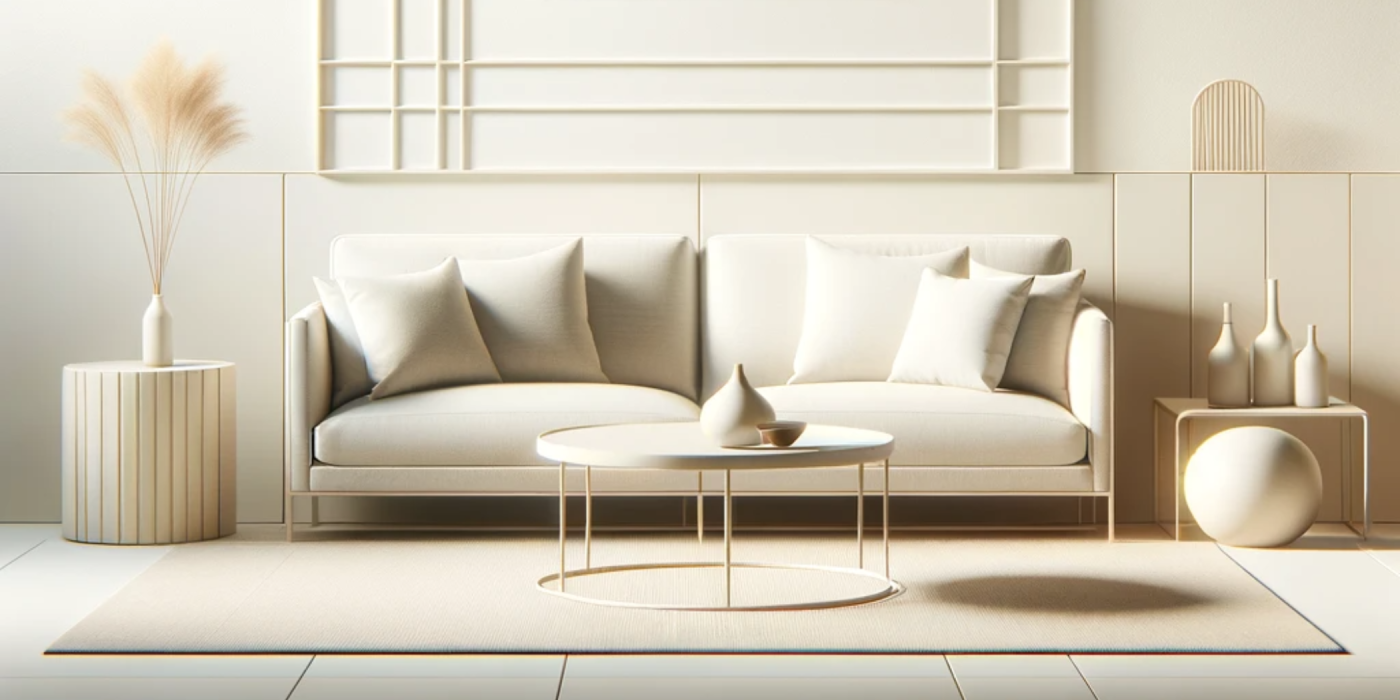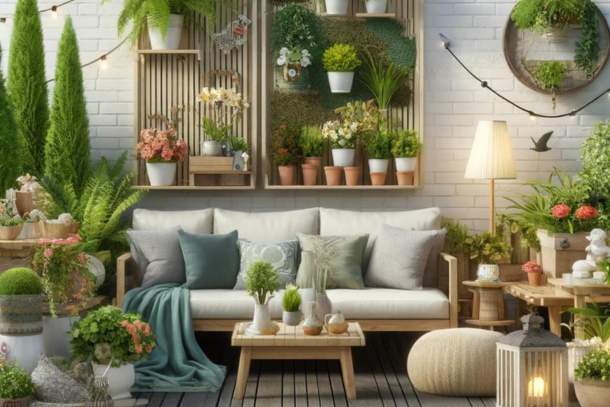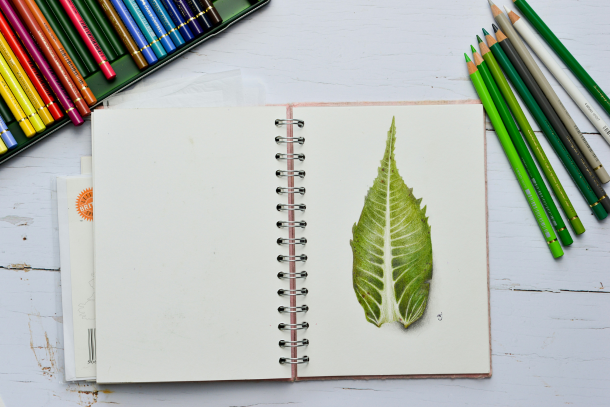Embracing Simplicity: Minimalist Habits to Start in 2024

Minimalism, a concept that has woven its way into various facets of our lives, has gained considerable traction in recent years. As we step into 2024, this philosophy continues to burgeon, capturing the attention of individuals seeking a more meaningful and less cluttered lifestyle. This introduction delves into the essence of minimalism, explores its growing popularity, and outlines the myriad benefits it brings.
Definition of Minimalism
Minimalism, at its core, is about stripping away the non-essential. It's a deliberate choice to live with less, focusing on what truly matters. This ideology extends beyond physical possessions, permeating thoughts, relationships, and activities. The minimalist ethos advocates for a life encumbered less by material possessions and more enriched by experiences, relationships, and personal growth.
The Growing Trend of Minimalism in 2024
In 2024, minimalism is not just a personal choice but a societal trend. Fuelled by increasing awareness of environmental concerns, a desire for simpler living amidst a fast-paced world, and the digital overload experienced by many, minimalism has become a beacon for those seeking tranquillity and purpose. This section will explore how minimalism has evolved in recent times and its growing appeal among diverse demographics.
Benefits of Adopting Minimalist Habits
Adopting minimalist habits can profoundly impact one's life. From decluttering living spaces to streamlining digital consumption, these habits foster a sense of peace, improve mental clarity, and enhance overall well-being. Minimalism also encourages sustainable living, which is not only beneficial for the individual but also for the planet. This part of the article will provide a brief overview of these benefits, laying the foundation for a deeper exploration in subsequent sections.
The Rise of Digital Minimalism
A. The Concept of Digital Minimalism
Digital minimalism is an emerging lifestyle choice centred around the mindful use of technology. It involves critically evaluating and reducing one's digital presence to enhance life quality. This philosophy encourages individuals to disconnect from digital noise and focus on what genuinely adds value to their lives.
B. Strategies for Reducing Digital Clutter
1. Unsubscribing from Unnecessary Emails
A cluttered inbox can be overwhelming, leading to stress and reduced productivity. A key step towards digital minimalism is to unsubscribe from non-essential emails. This includes marketing emails, newsletters, or updates that no longer serve your interests or needs. Tools like email filters and unsubscribe services can significantly streamline this process.
2. Limiting Social Media Usage
Social media can be a major digital distraction, often contributing to anxiety and time wastage. Setting strict boundaries for social media usage, such as limiting check-ins to specific times of the day or week, can be immensely beneficial. It's also helpful to curate your feeds to ensure they align with your interests and values, thereby reducing digital noise.
3. Streamlining Digital Files and Folders
Organising digital files and folders is crucial in reducing digital clutter. Regularly reviewing and deleting unnecessary files, organising documents into structured directories, and utilising cloud storage solutions can greatly enhance digital efficiency.
C. Benefits of Digital Minimalism for Mental Clarity and Productivity
Embracing digital minimalism can lead to improved mental clarity and heightened productivity. By reducing digital distractions, individuals can focus more on meaningful tasks and activities. This approach promotes a more balanced lifestyle, where technology serves as a tool rather than a source of constant interruption.
Decluttering Physical Spaces
Importance of a Clutter-Free Environment
Maintaining a clutter-free environment is paramount for a minimalist lifestyle. It's not merely about aesthetics; it's about creating a serene and efficient living space that promotes well-being. Clutter can be overwhelming and mentally taxing, leading to increased stress and decreased productivity. By eliminating unnecessary items, we make room for what truly matters, both physically and mentally.
Step-by-Step Guide to Decluttering Your Home
Assessing Your Space
Start by evaluating each room in your home. Identify items that are rarely used, unnecessary, or don't contribute positively to your space.
Sorting and Organising
Create categories: 'Keep', 'Donate', 'Recycle', and 'Dispose'. Be ruthless but thoughtful in your sorting process. Remember, the goal is to reduce possessions to those that are useful or bring joy.
Systematic Decluttering
Tackle one room at a time, starting with the most cluttered. This methodical approach prevents the process from becoming overwhelming.
Mindful Disposal
Dispose of items responsibly. Donate what can be reused, recycle where possible, and discard items that are beyond repair in an environmentally-friendly manner.
Tips for Maintaining a Minimalist Home
Regular Reviews
Periodically review your possessions. Our needs and tastes evolve, so it's essential to reassess regularly.
One-In-One-Out Rule
When acquiring something new, ensure an equivalent item is removed. This maintains a balance and prevents accumulation.
Embrace Empty Spaces
Resist the urge to fill empty spaces. Appreciate the simplicity and calmness that these open areas provide.
By decluttering and adopting these maintenance strategies, you can transform your home into a tranquil, minimalist haven that reflects the principles of a simpler, more intentional way of living.
Mindful Consumption
Rethinking Purchasing Habits
In 2024, a critical aspect of minimalism involves a conscious re-evaluation of our purchasing habits. The principle here is straightforward: to buy less, but more mindfully. This shift requires us to pause and consider the necessity and long-term value of each purchase. By questioning impulsive buying and opting for items that we genuinely need or which bring lasting satisfaction, we can significantly reduce wasteful expenditure and clutter.
Assessing Needs vs Wants
Before making a purchase, it's important to distinguish between a 'need' and a 'want'. A need is something essential, without which our daily life or well-being might be compromised. In contrast, a want is something that we desire, but can live without. Prioritising needs over wants can lead to more sustainable and financially prudent living.
Emphasis on Quality over Quantity
The minimalist approach also advocates for choosing quality over quantity. This means selecting items that are durable, well-made, and likely to last longer, rather than cheaper, disposable alternatives. Investing in quality not only reduces the frequency of replacements but also ensures a better user experience.
Long-term Cost Effectiveness
Although quality items might have a higher initial cost, their durability often makes them more cost-effective in the long run. This approach not only saves money over time but also contributes to less waste, aligning with sustainable living practices.
The Environmental and Personal Benefits of Mindful Consumption
Mindful consumption has profound benefits both personally and environmentally. By reducing the number of unnecessary purchases, we minimise our carbon footprint and contribute to less waste production. On a personal level, mindful consumption leads to a simpler, less cluttered lifestyle, allowing more time and energy to be focused on what truly matters – relationships, experiences, and personal growth.
Enhancing Personal Well-being
Embracing mindful consumption can significantly reduce stress and anxiety associated with clutter and financial strain. It fosters a sense of contentment, knowing that our purchasing decisions align with our values and contribute to a more sustainable world.
Simplifying Daily Routines
The pursuit of minimalism extends beyond physical spaces and into the realm of our daily activities. By simplifying our routines, we can enhance our efficiency and reduce the mental burden of constant decision-making. This section delves into practical steps to streamline our day-to-day lives, fostering a minimalist approach that can lead to a more focused and serene existence.
Identifying and Eliminating Non-Essential Activities
Assessing Daily Tasks
Start by scrutinising your daily schedule to identify tasks that do not contribute to your overall well-being or goals. This can involve a critical analysis of habitual activities, from mindless scrolling on social media to attending unnecessary meetings.
Prioritising Essential Activities
Once non-essential tasks are identified, prioritise activities that align with your values and goals. This focus on essential tasks not only clears time but also directs your energy to what truly matters.
Streamlining Daily Tasks for Efficiency
Creating Efficient Systems
Develop systems and routines that streamline your daily tasks. This could be as simple as organising your workspace for better productivity or batching similar tasks to reduce the time spent on setup and transition.
Utilising Technology Wisely
Embrace technology that aids in efficiency. This includes using apps for to-do lists, calendars for scheduling, and automating repetitive tasks where possible. However, be mindful not to let technology become a source of distraction.
The Role of Routines in Reducing Decision Fatigue
Establishing Consistent Routines
Adopting consistent daily routines can significantly reduce the number of decisions you have to make, thereby lowering decision fatigue. This can include establishing a fixed morning routine, predetermined meal plans, or a regular exercise schedule.
The Power of Habit
Routines, once established, become habits. These habits then run on autopilot, freeing up mental space for more important decisions and creative thinking. This shift towards habitual living is at the core of a minimalist lifestyle, where simplicity and efficiency reign.
Financial Minimalism
Adopting a Minimalist Approach to Personal Finance
Embracing minimalism in your financial life involves a conscious shift in how you view and manage your money. It’s not merely about spending less; it’s about making more intentional and meaningful financial choices. This approach encourages you to prioritise spending on necessities and things that genuinely add value to your life, while eliminating unnecessary expenses.
Prioritising Essential Expenditures
Start by evaluating your regular expenses and identifying what is truly essential. This could include rent, groceries, utilities, and insurance. The goal is to distinguish between 'needs' and 'wants,' focusing your financial resources on the former.
Value-Based Spending
Consider each purchase in terms of the value it adds to your life. This doesn’t mean you should never indulge in luxuries; rather, it suggests that such purchases should be made thoughtfully, ensuring they align with your personal values and long-term goals.
Strategies for Budgeting and Saving
Creating a budget is a fundamental step in financial minimalism. A budget helps you track your income and expenditures, making it easier to identify areas where you can cut back.
Implementing a Budget Plan
Utilise budgeting tools or apps to help you manage your finances more effectively. Regularly review and adjust your budget to reflect any changes in your income or expenses.
Saving Techniques
Focus on building an emergency fund and saving for future goals. This might involve setting aside a fixed percentage of your income each month or using automated savings plans.
The Long-term Benefits of Financial Minimalism
Financial minimalism can lead to significant long-term benefits, such as reduced financial stress, increased savings, and greater financial freedom.
Enhanced Financial Security
By spending less and saving more, you can build a substantial financial cushion, reducing the stress associated with living paycheck to paycheck.
Achieving Financial Goals
Whether it’s buying a house, traveling, or preparing for retirement, adopting a minimalist approach to your finances can help you achieve these goals more efficiently and with less financial strain.
Minimalist Mindset and Well-being
Developing a Minimalist Mindset
Adopting a minimalist mindset is integral to embracing a simpler, more meaningful lifestyle. It involves a conscious effort to focus on what is essential and to let go of the superfluous. This mindset is not just about physical decluttering; it extends to mental and emotional aspects of life as well. By prioritising needs over wants and valuing experiences over possessions, individuals can cultivate a sense of contentment and purpose.
Key Principles
- Intentionality: Making deliberate choices about what to keep in your life, be it possessions, activities, or relationships.
- Simplicity: Striving for a simpler lifestyle that reduces stress and increases efficiency.
- Focus on Essentials: Identifying what is truly important and eliminating the rest.
The Relationship Between Minimalism and Mental Health
Minimalism can have a profound impact on mental health. By reducing clutter, both physically and mentally, individuals often experience lower levels of stress and anxiety. The minimalist approach encourages living in the present moment, leading to heightened awareness and reduced overthinking. This can foster a more positive outlook on life, enhancing overall mental well-being.
Mental Health Benefits
- Reduced Anxiety: Less clutter and fewer distractions can lead to a calmer mind.
- Increased Focus: A minimalist environment can boost concentration and productivity.
- Enhanced Mood: Simplifying life can lead to increased happiness and satisfaction.
Practicing Gratitude and Mindfulness
Embracing gratitude and mindfulness is central to the minimalist philosophy. Practising gratitude involves acknowledging and appreciating the positive aspects of life, however small. Mindfulness, on the other hand, encourages living in the present and being fully engaged in the current moment. These practices help in cultivating a deeper connection with oneself and the surrounding world, enhancing the minimalist experience.
Incorporating Gratitude and Mindfulness
- Daily Reflections: Taking time each day to reflect on things you are thankful for.
- Mindful Activities: Engaging in activities that promote presence and awareness, such as meditation or nature walks.
- Journaling: Keeping a journal to record thoughts, feelings, and moments of gratitude.
Overcoming Challenges in Minimalism
A. Common Obstacles When Adopting Minimalist Habits
While embracing minimalism can be incredibly rewarding, it's not without its challenges. One of the most common obstacles is the emotional attachment to possessions. Many find it hard to let go of items that have sentimental value, even if they no longer serve a practical purpose. Another significant hurdle is the societal pressure to consume and own more, which often conflicts with the minimalist ethos.
B. Strategies to Overcome These Challenges
1. Emotional Attachment to Possessions
To combat the emotional challenge, it's essential to recognise the difference between sentimental value and practical utility. One strategy is to take photographs of items before parting with them, preserving the memory without keeping the physical object. Additionally, starting with small, less sentimental items can help ease the process.
2. Societal Pressure
Regarding societal pressures, staying true to one’s personal values is key. Surrounding oneself with like-minded individuals or communities can provide support and inspiration. It's also helpful to regularly remind oneself of the benefits of a minimalist lifestyle, such as increased mental clarity and reduced stress.
C. Encouragement for Staying the Course
Staying the course requires perseverance and a clear vision of the benefits. Remember, minimalism isn't about deprivation; it's about making room for more of what truly matters. Celebrate small victories along the way, and don't be too hard on yourself if you face setbacks. The journey to minimalism is a personal one, and it’s more about progress than perfection. Keep focused on the positive changes you're making in your life and how they align with your overall goals for wellbeing and happiness.
Conclusion
A. Recap of the Key Minimalist Habits to Adopt in 2024
As we reflect upon the myriad habits that encapsulate minimalism, it's paramount to underscore the most significant ones to embrace in 2024. Foremost, digital minimalism stands out, urging us to declutter our digital lives for enhanced mental clarity. Then, there's the pivotal role of decluttering our physical spaces, which not only simplifies our living areas but also our minds. Mindful consumption, another cornerstone, prompts us to rethink our purchasing habits, favouring quality over quantity. Furthermore, simplifying our daily routines and adopting a financially minimalist approach can significantly streamline our lives. These habits, collectively, pave the way towards a more focused and serene existence.
B. Final Thoughts on the Minimalist Lifestyle
Minimalism, more than just a mere trend, is a lifestyle choice that offers profound benefits. By reducing the superfluous, it allows us to focus on what truly matters. This lifestyle isn't about deprivation; rather, it's about finding freedom and joy in simplicity. Embracing minimalism can lead to not only a tidier home but also a more contented and purposeful life.
C. Encouragement to Start Small and Stay Consistent
Embarking on the journey of minimalism need not be daunting. The key is to start small – perhaps with a single drawer or a digital detox day – and gradually build upon these habits. Consistency is crucial; even small, daily actions can culminate in significant life changes over time. Remember, minimalism isn't a destination but a continuous process of mindful living. Stay patient and persistent, and the rewards of a minimalist lifestyle will unfurl in time.
Related to this article are the following:
- Water Bottles: The Environmental Impact. How many 16.9 ounce water bottles are in a gallon?
- The Power of Relaxing Music: A Guide to Enhancing Your Well-Being
- Revolutionizing Workplace Wellness: An Enthusiast's Guide to Office Massage Chairs
- Minimalism in Design: Everyday Life and Minimalism with Kids
- How to Improve Your Self-Esteem: Practicing Self-Love
I do hope you have enjoyed this article and hope that you will subscribe to my newsletter so you can get the latest information about all things naturally relaxing.
Stay in touch, join the Naturally Relaxing Newsletter
Newsletter Signup
Post Your Comments
or post as a guest
Be the first to comment.
Latest articles in Lifestyle

DIY Natural Beauty Treatments for Glowing Summer Skin

10 Natural Remedies to Combat Summer Allergies

How to Create a Relaxing Outdoor Space for Summer

Mindfulness Techniques to Reduce Stress in Your Daily Life

Hydration and Wellness: Natural Ways to Stay Hydrated in Summer






